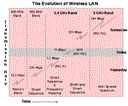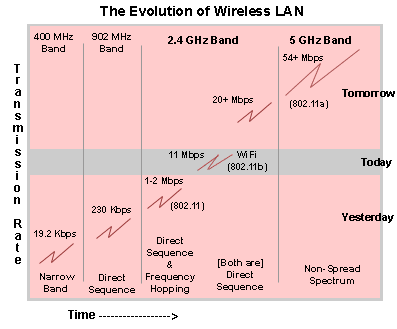N+I 2000: The Sky's the Limit for Wireless LAN

By: John McKnight, Assistant Editor
Wireless local area networks (LAN) have been soaring over the past year, thanks to falling costs and a high-speed standard adopted by dozens of companies.
The force behind the standard is the Wireless Ethernet Compatibility Alliance (WECA), a nonprofit organization formed in August 1999 by 3Com Corp. (Santa Clara, CA), Aironet Wireless Communications (now part of San Jose, CA-based Cisco Systems), Intersil Corp. (Palm Bay, FL), Lucent Technologies (Murray Hill, NJ), Nokia Corp. (Espoo, Finland), and Symbol Technologies (San Jose, CA). WECA has been busy since then, now touting 36 member companies (see Ten New Companies Endorse Wireless LAN Interoperability Initiative).
Featuring representatives from about 20 member companies at a pavilion at this year's Networld Interop (May 7-12, 2000) in Las Vegas, WECA's—and thus wireless LAN's—growth could really be seen.
Interoperability standard
"Interoperability in Action" was the theme of the WECA pavilion. "It doesn't matter which companies you get your components from," WECA presenters said, "with Wi-Fi [Wireless Fidelity], and the interoperability it represents, it just doesn't matter."
The alliance is working to develop and promote true multivendor interoperability among IEEE 802.11b High Rate (HR) Wireless LAN products by certifying that systems from different manufacturers adapt this standard. Interoperability testing for Wi-Fi products began on February 28, 2000, and was conducted by Silicon Valley Networking Lab Inc. (SVNL; Palo Alto, CA).
At N I 2000, WECA announced that the eight companies, and their respective products, listed below were awarded the first Wi-Fi certifications for wireless LAN interoperability.
- 3COM Corp. – AirConnect
- Cisco Systems – Cicso Aironet 340
- Compaq Computer – WLX00
- Enterasys Networks – RoamAbout
- Intermec – INCA
- Lucent Technologies – ORINOCO
- Symbol Technologies – Spectrum 24 High Rate
- Zoom Telephonics – Zoom Wireless
On the move
But why is wireless LAN becoming popular? The answer is: Mobility. The need for mobility in the workplace—and not just the ability to transfer a laptop from one docking port to another, but having the capability of network connectivity from any point within a defined area—has increased dramatically. Companies are setting up wireless LANs in conference rooms, allowing meeting participants to keep a full network and Internet connection, without the cost or hassle of wireline ports.
"With wireless LAN, now meeting participants won't be on hands and knees, scrambling around on the floor looking for a port to plug into," said Larry Ross, technical marketing engineer at Cisco Systems, Inc. "Wireless LANs make it quick and easy. Just turn on your computer, connect to the wireless LAN, and get working."
Of course, mobility wouldn't have meant much if wireless LAN performance had not become competitive with its hard-wired cousin. Last year's breaking of the 10 Mbps data rate brought wireless LAN to where it needed to be. This evolution to 11 Mbps, many analysts believe, snapped the spotlight back onto wireless LAN.

Reproduced courtesy of The WCCN Letter (www.wccn.com)
Companies like 3Com, who broke into the high-speed wireless LAN scene at N I '99, are ecstatic about the advancement of wireless LANs.
"Wireless LAN's popularity has been skyrocketing," said Marc Feghali, product line manager for the Wireless Connectivity Division at 3Com. "We're having clients setting up offices, conferences rooms and so on with wireless LAN, in addition, and sometimes in place of, hard-wired versions. Wireless LANs cut costs and increase productivity."
The future of wireless LAN
Can wireless LAN's popularity continue? According to a WECA report, industry analysis firm Frost and Sullivan (San Jose, CA) forecasts that "manufacturers' revenue in the total worldwide wireless LAN industry will approach $884 million by the year 2002." This figure represents a 113% total revenue growth over forecasted 1999 revenues.
This seems to be a resounding yes. As Feghali said, wireless LANs are skyrocketing.
WECA expects that membership will continue to grow over the next year. Membership in WECA is open to all companies who support the Wi-Fi standard for 2.4 GHz wireless LAN products, including any manufacturer that would like to submit its Wi-Fi based product for interoperability testing.
WECA plans to periodically announce the certification of other alliance members as they submit their products for testing, with testing taking about four days to complete.
The alliance predicts that the Wi-Fi standard will dramatically change the industry over the next couple years. According to WECA, "As more and more people see the increased need for one global standard, [we] expect to see wide market adoption of the Wi-Fi standard."
